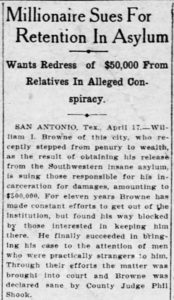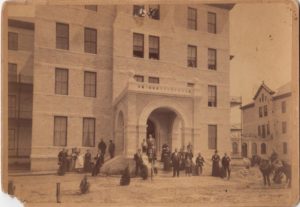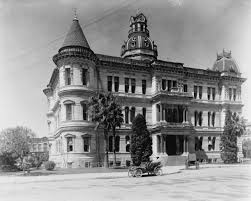
San Antonio City Hall, 1892
Most patients going to asylums fought vigorously against commitment, but occasionally a patient went more than willingly. In 1902 W. J. Hayden was accused of swindling a large sum of money from the Woods bank. According to the San Antonio Gazette, Hayden was indicted for the crime, but shortly afterward exhibited signs of insanity and was committed to the Southwestern Insane Asylum in San Antonio (my last post also mentioned this asylum).
Hayden escaped from the asylum shortly afterward and made it as far as north Texas–where he was apprehended for forgery. In jail he wrote to the superintendent of the asylum and asked to go back. Dr. Graves, the superintendent, allowed Hayden to return, but he was suspicious of his patient’s actual insanity. Graves monitored Hayden closely the day he returned and decided that he was only feigning insanity.
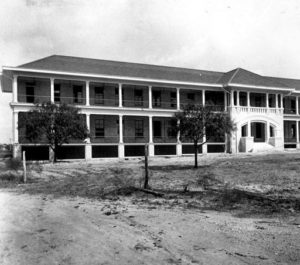
Exterior of the Male Hospital, Southwestern Insane Asylum, circa 1910, courtesy UTSA, Florence Collett Ayres
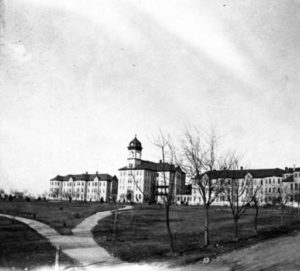
Southwestern Texas Lunatic Asylum, San Antonio circa 1905, courtesy San Antonio Conservation Society
That very night, Hayden escaped once more from a third story window. Unfortunately, he could only manage to get out with his nightshirt on, and wandered around the brushy countryside that way until he was apprehended once more by a sheriff in Smith county. Sheriff Tobin of Bexar county (where the asylum was located) told his counterpart he wanted Hayden returned. Tobin, as well as Graves, was convinced that Hayden was faking insanity, but when the sheriff went to review the records of the case, they had all disappeared–including Hayden’s indictment. Ultimately, the sheriff in Smith county charged Hayden with stealing mules and the twice-escaped “patient” could no longer escape a trial.

